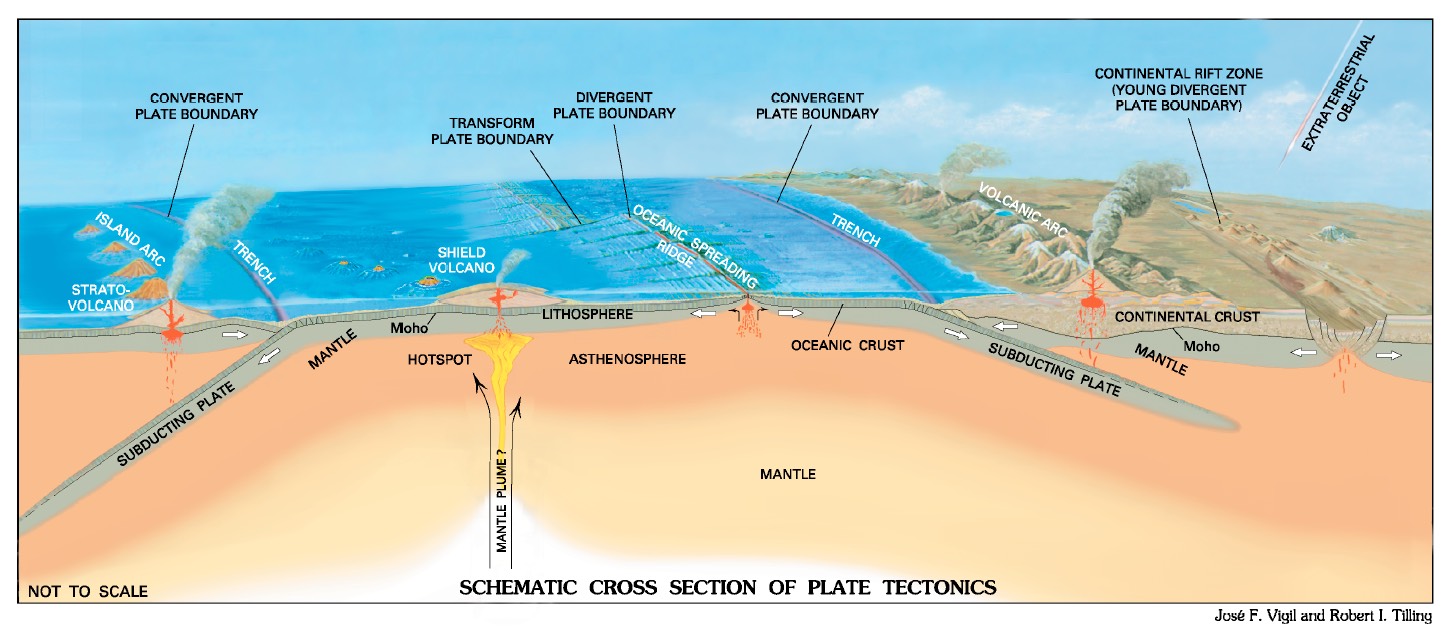2.3 Why? Divergent plate boundaries
Why do igneous rocks form at divergent plate boundaries? Figure 2.03 above is a schematic cross section of the earth's surface from This Dynamic Planet. Two types of divergent plate boundaries are shown in Figure 2.03, a mid-ocean ridge and a continental rift. In Figure 2.03, reddish magma drops are drawn beneath the two types of divergent boundaries shown, but no explanation for the magma is evident. What do you believe is the reason for volcanoes at divergent plate boundaries? Choose from the following list and press "Enter":
Yes! Viscous convection of a solid mantle brings hot, deep mantle shallower with little decrease in temperature. Lowering the pressure causes the mantle to partially melt. The resulting magma rises through the crust because of its lower density and erupts.
Let's look at the evidence for this conclusion. Some of the evidence comes from geophysics, some from igneous petrology.
No. Viscous convection of a solid mantle brings hot, deep mantle shallower with little decrease in temperature. Lowering the pressure causes the mantle to partially melt. The resulting magma rises through the crust because of its lower density and erupts.
Let's look at the evidence for this conclusion. Some of the evidence comes from geophysics, some from igneous petrology.

Figure 2.03. Schematic cross section of plate tectonics. A simplified cross section of important features of tectonic plates and their interactions by José F. Virgil and Robert I. Tilling (Simkin et al., 2006, This Dynamic Planet). Click on the image to see a larger version with more information.